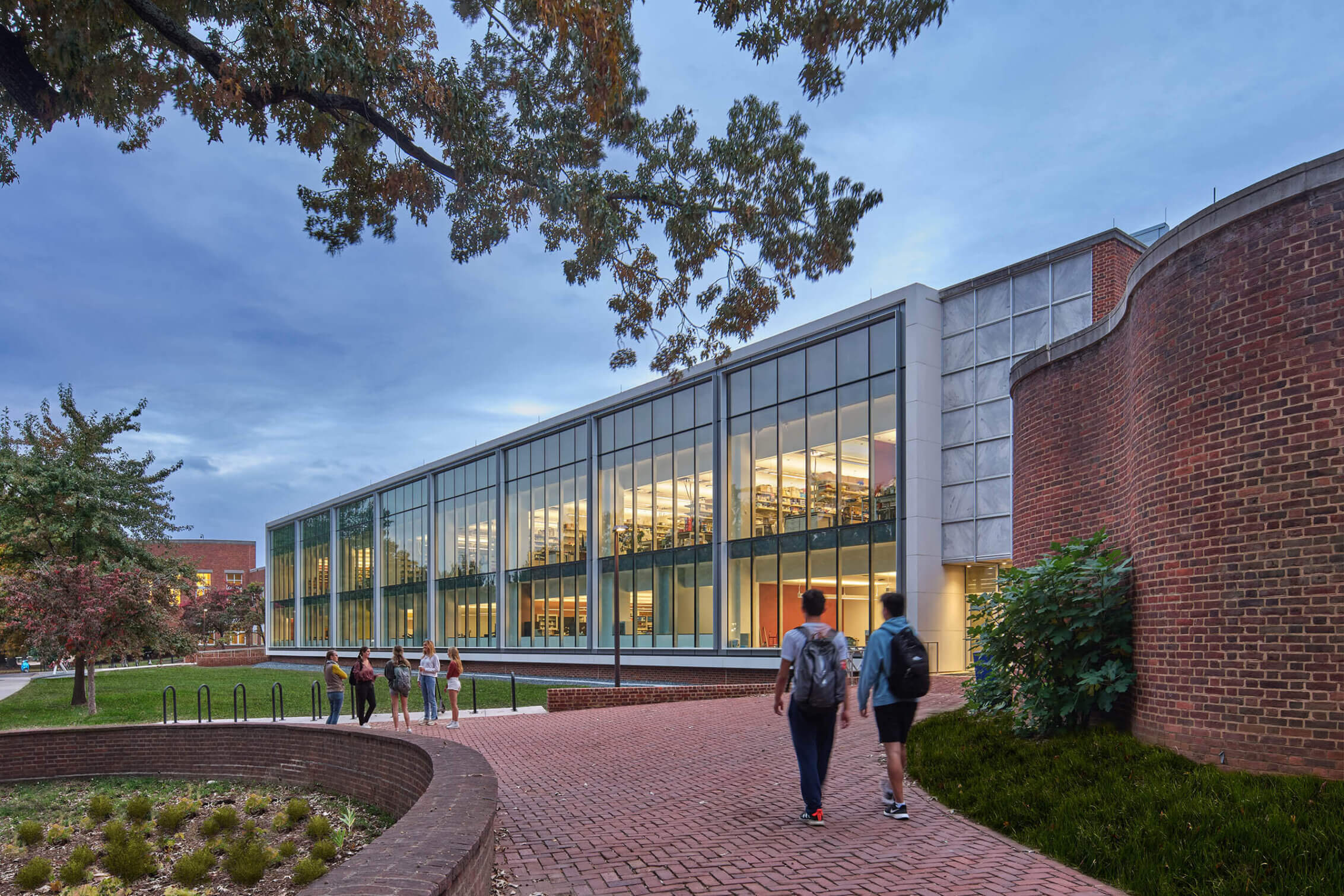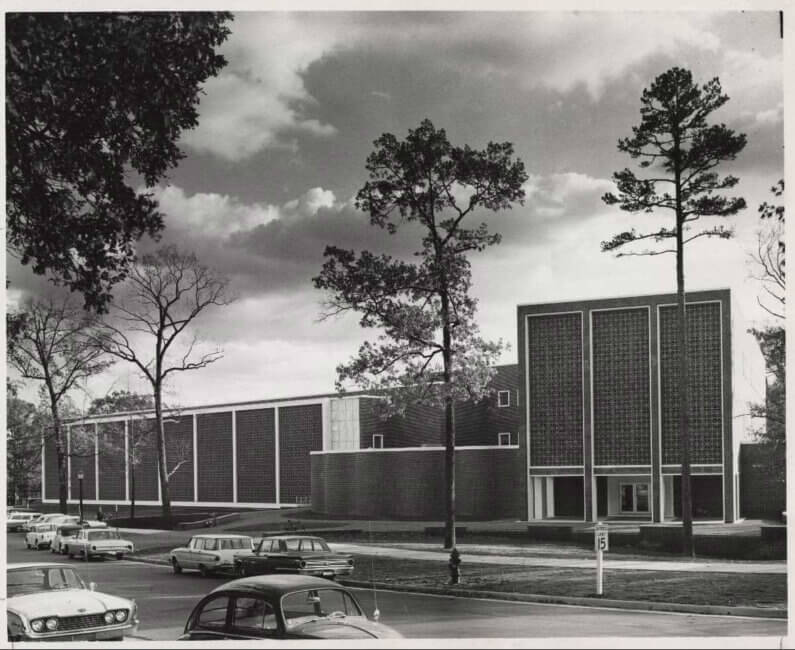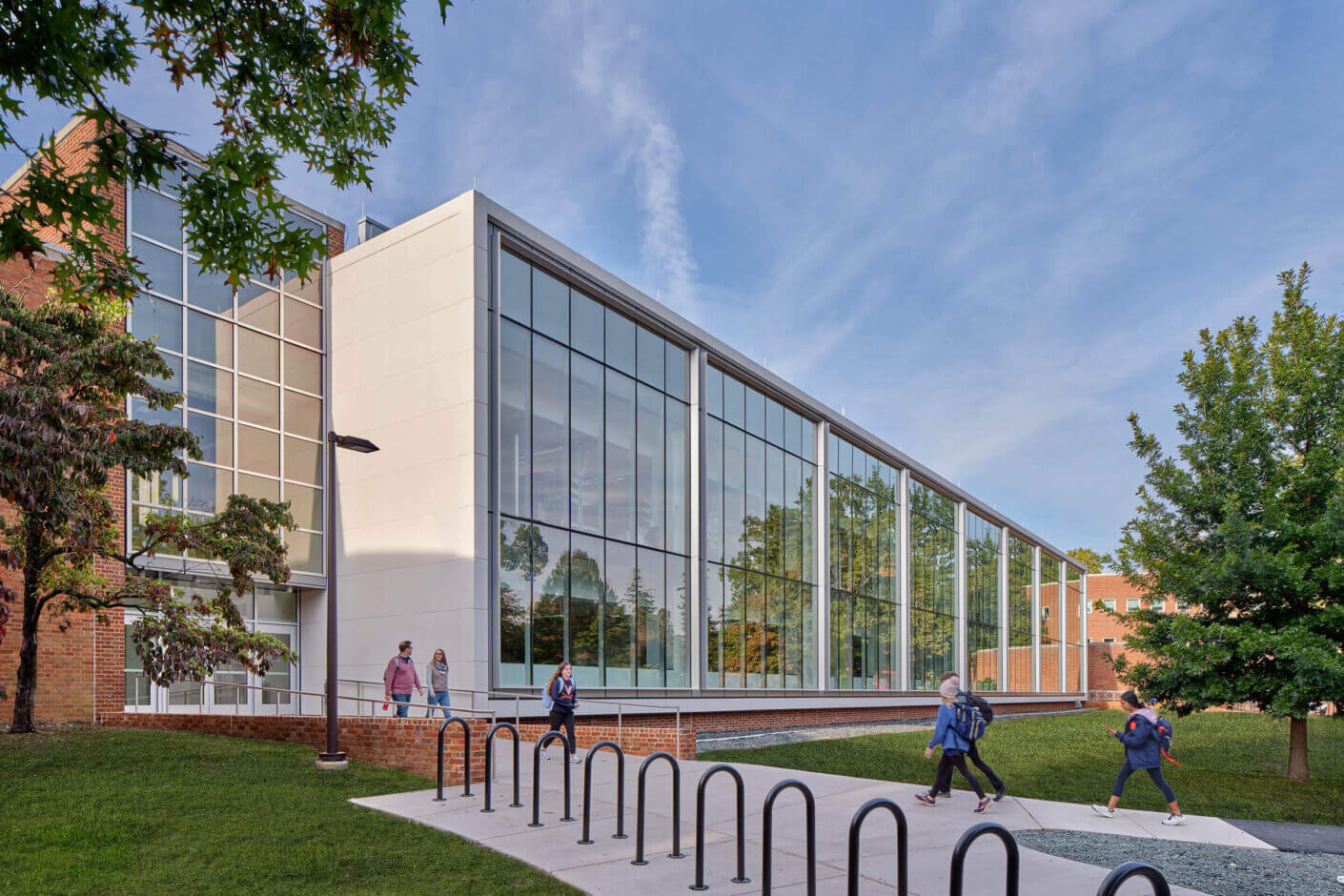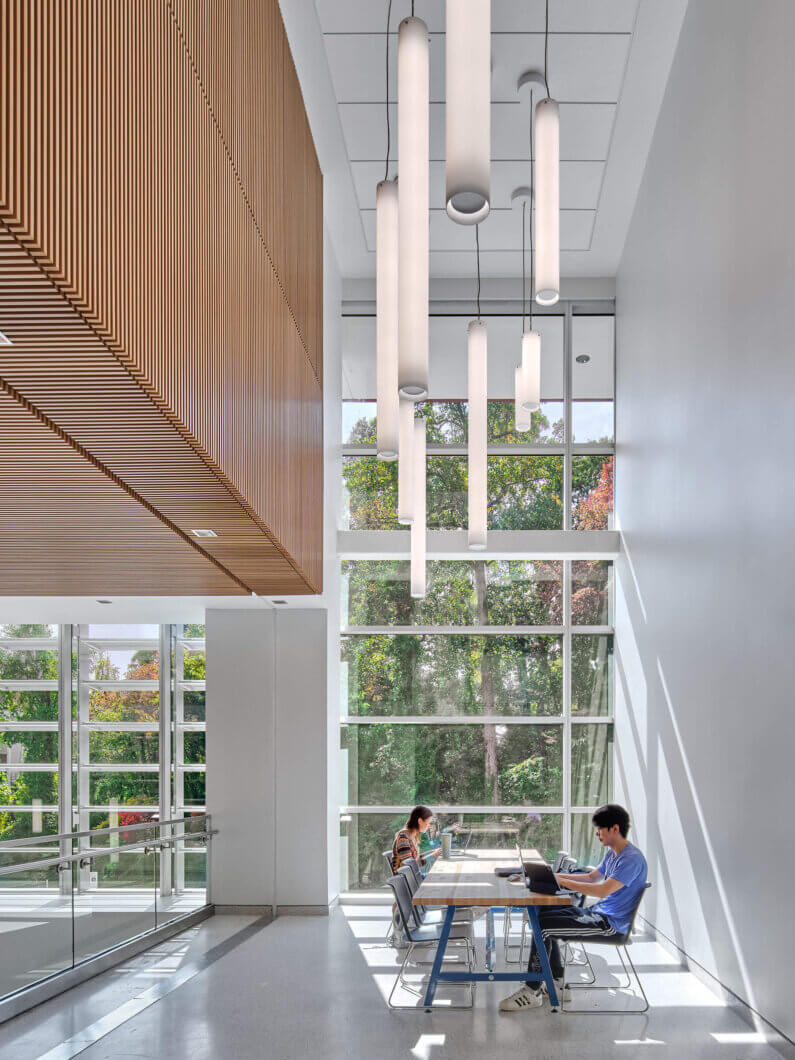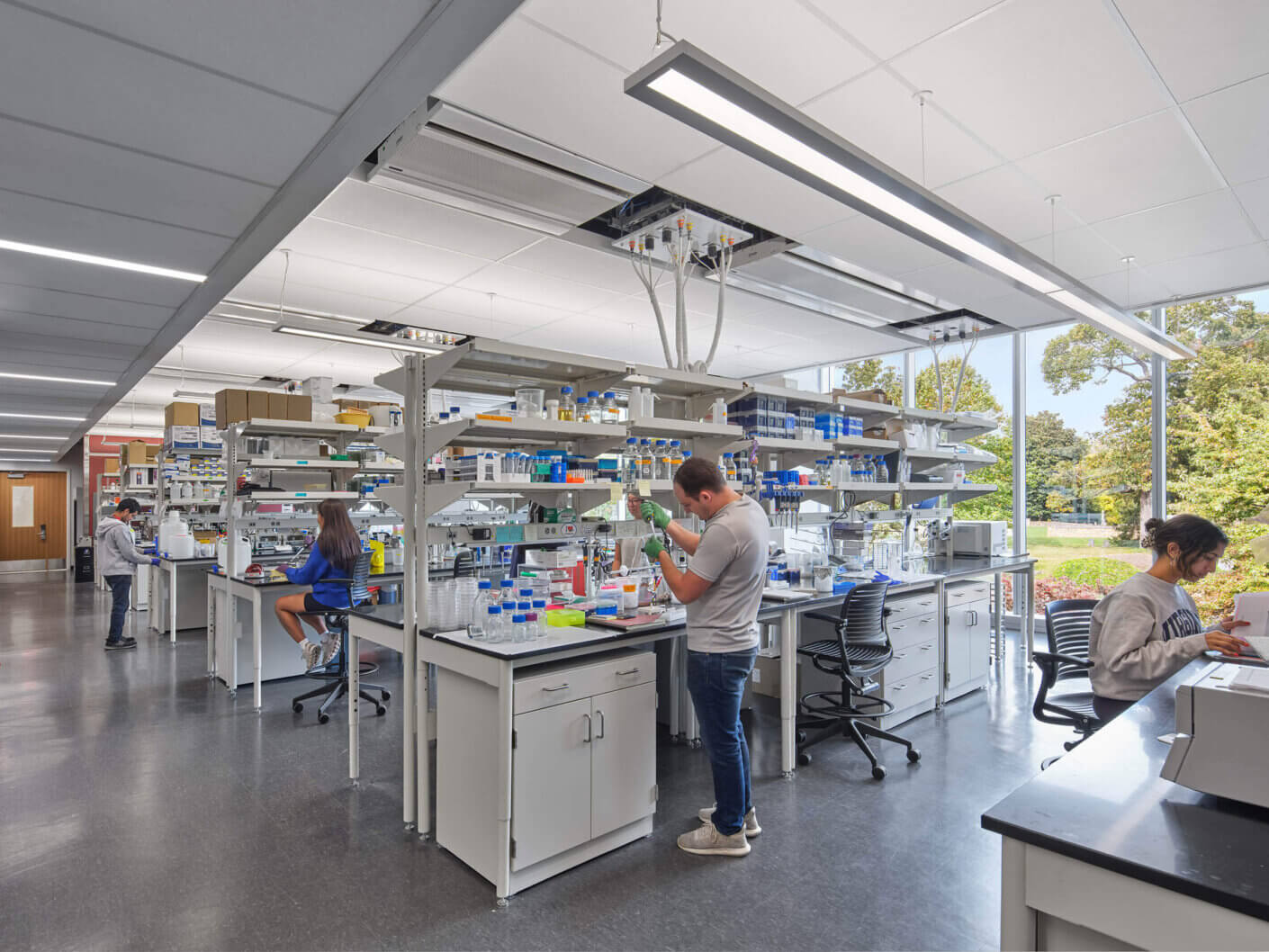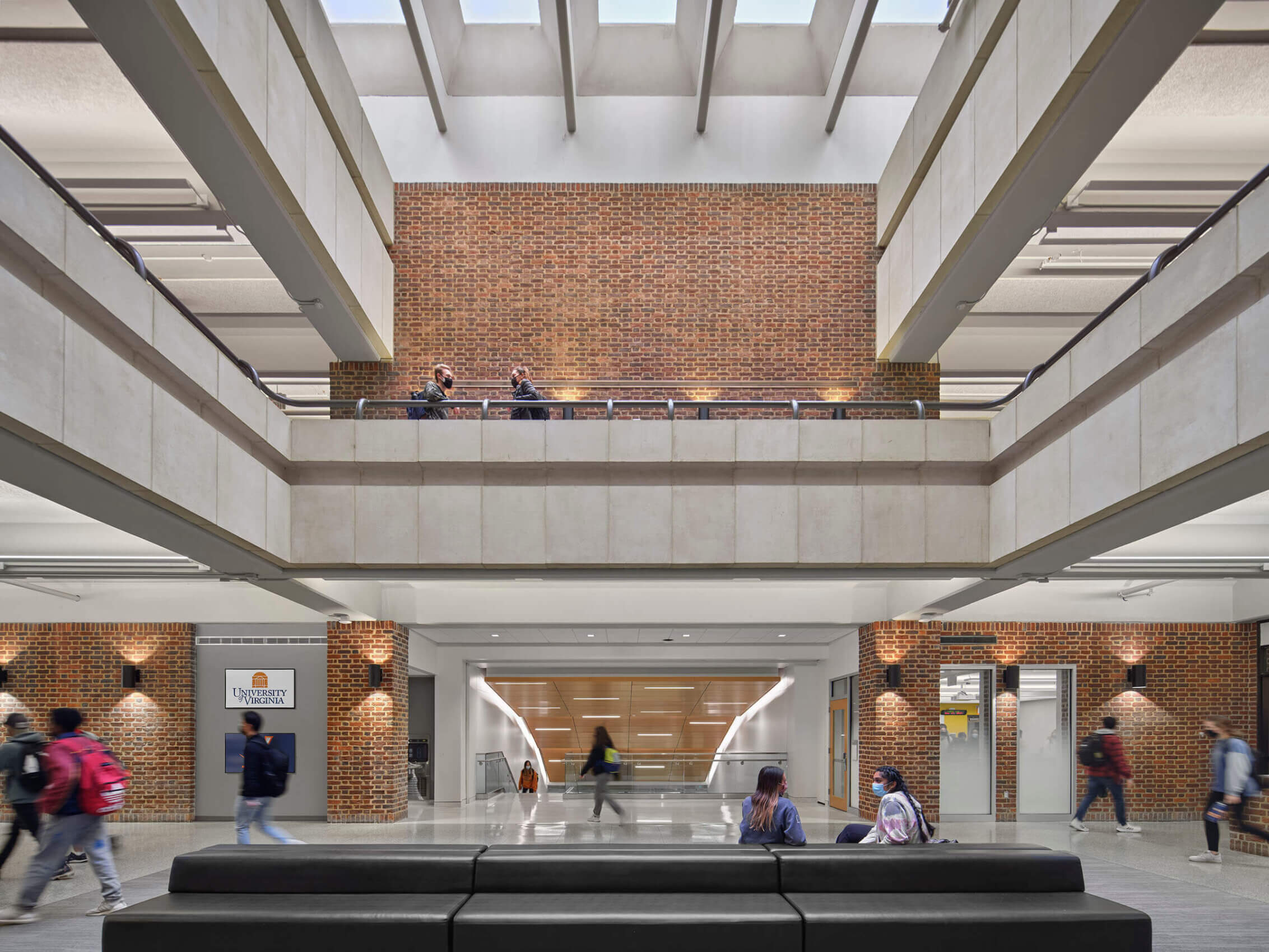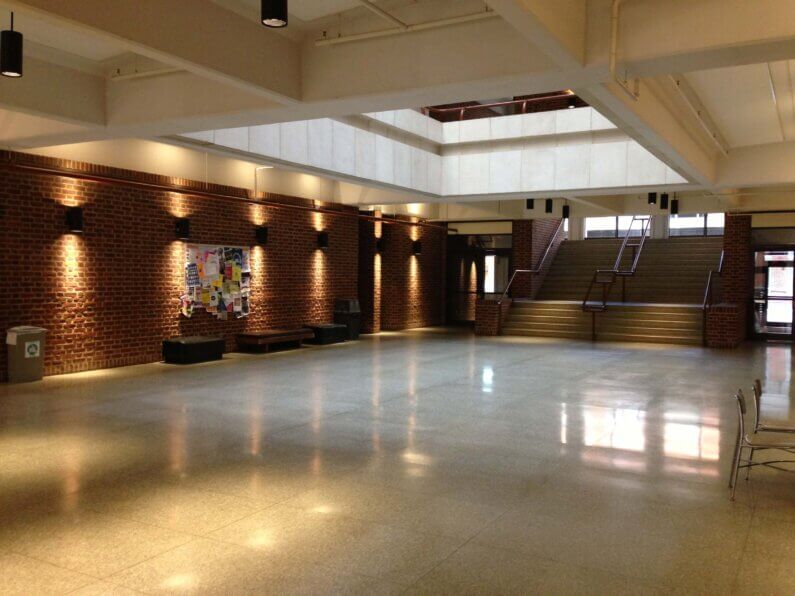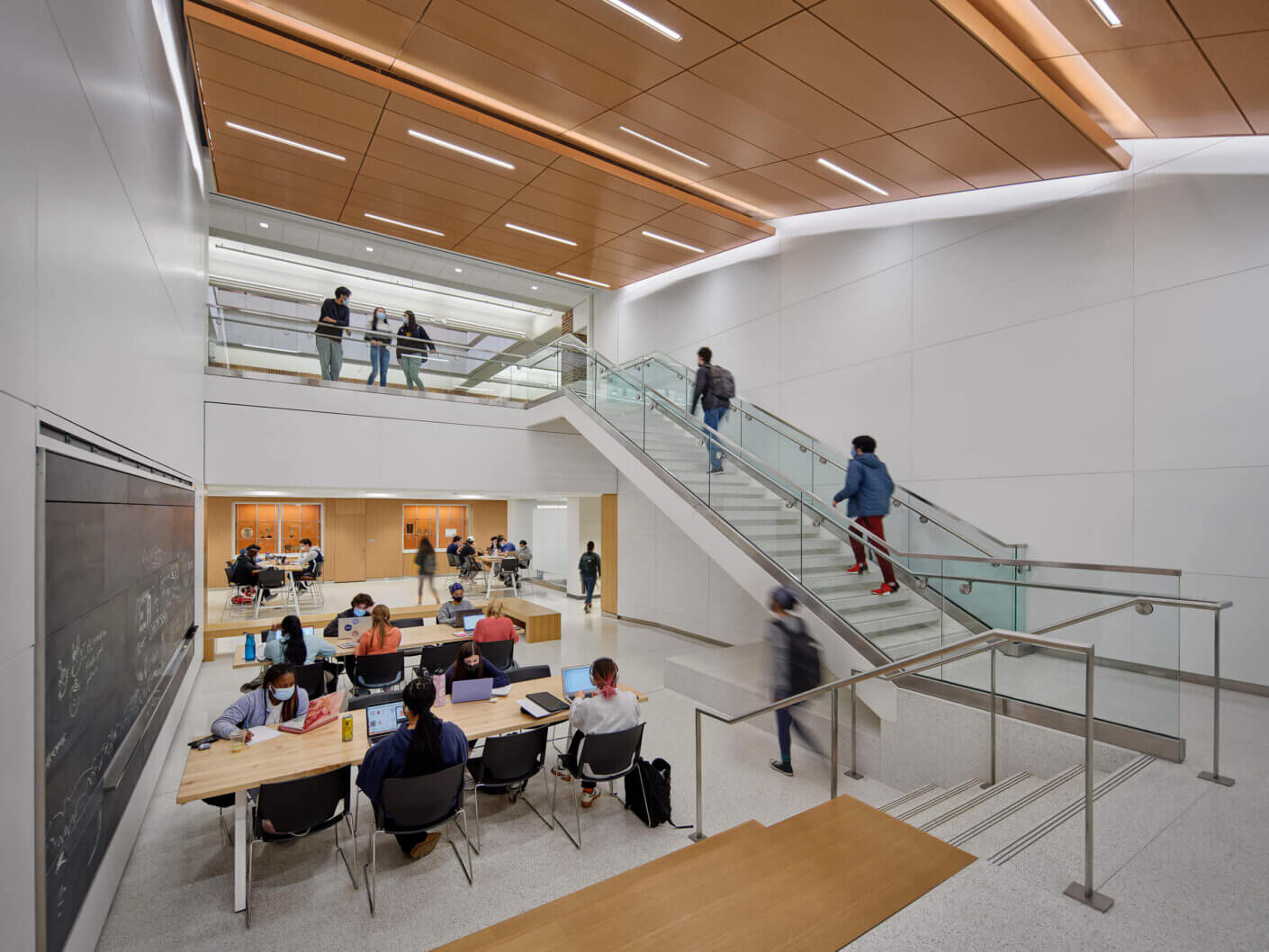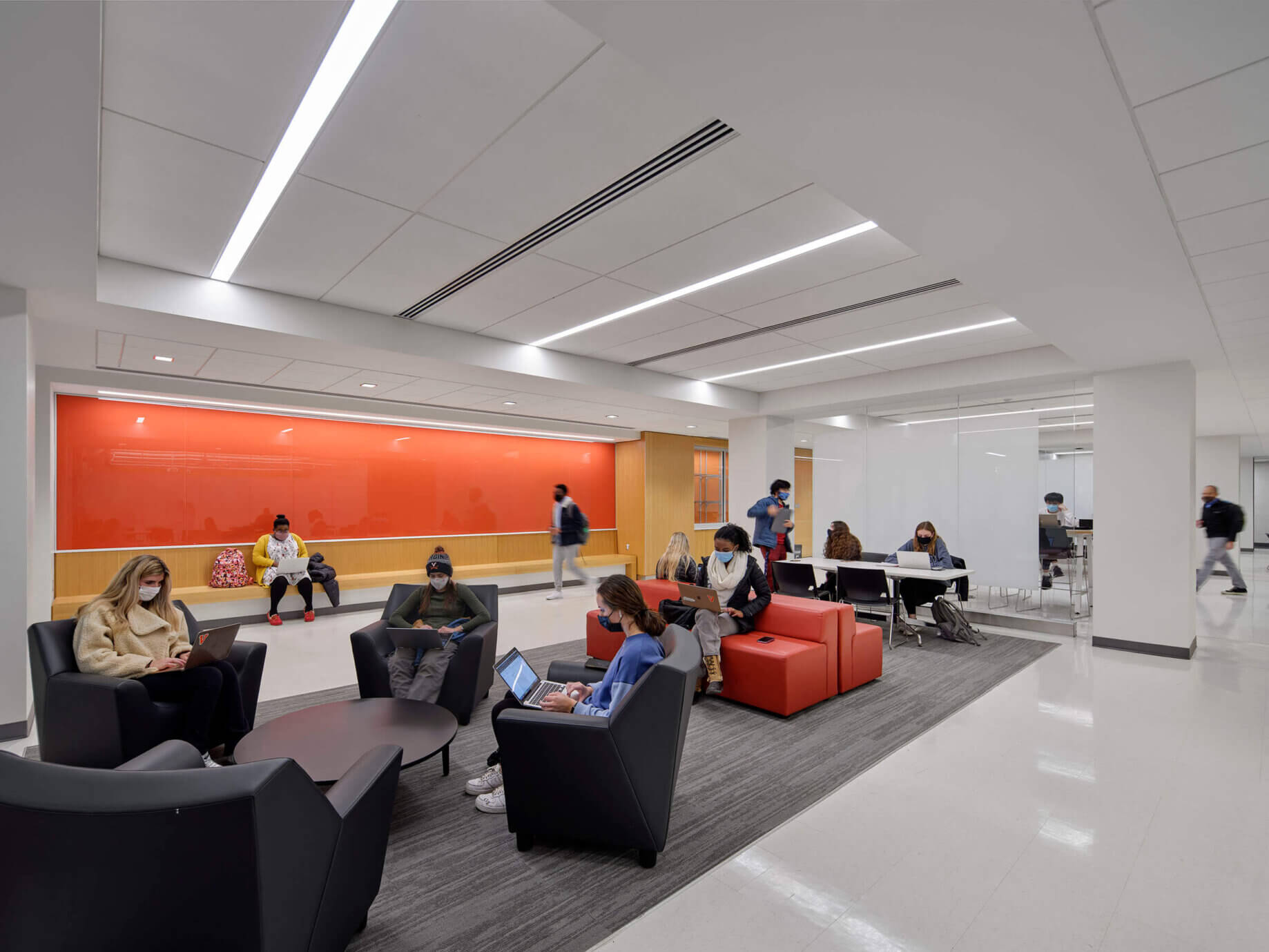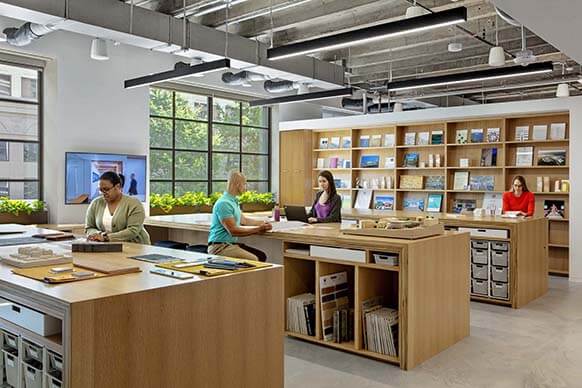We have completed the 400,000 square-foot renovations of two landmark University of Virginia science research and teaching buildings, Gilmer Hall and the Chemistry Building. Dating back to 1961 and 1965 respectively, the first major examples of mid-century modern architecture on the Charlottesville, Virginia, campus have been completely renewed, setting the stage for another 50 years of teaching and research through collaborative and interdisciplinary discovery.
“Gilmer Hall and the Chemistry Building were groundbreaking for their time and have become a cherished part of the University of Virginia,” said Anna Towns, Director of Space Planning and Management at UVA. “There was a big group of people at the University who thought that the original buildings should come down. I am delighted that we made the decision to keep them, and appreciate the creative and thoughtful ways the Perkins&Will team enabled us to transform these buildings into an environment that provides the best opportunities for learning and teaching.”
